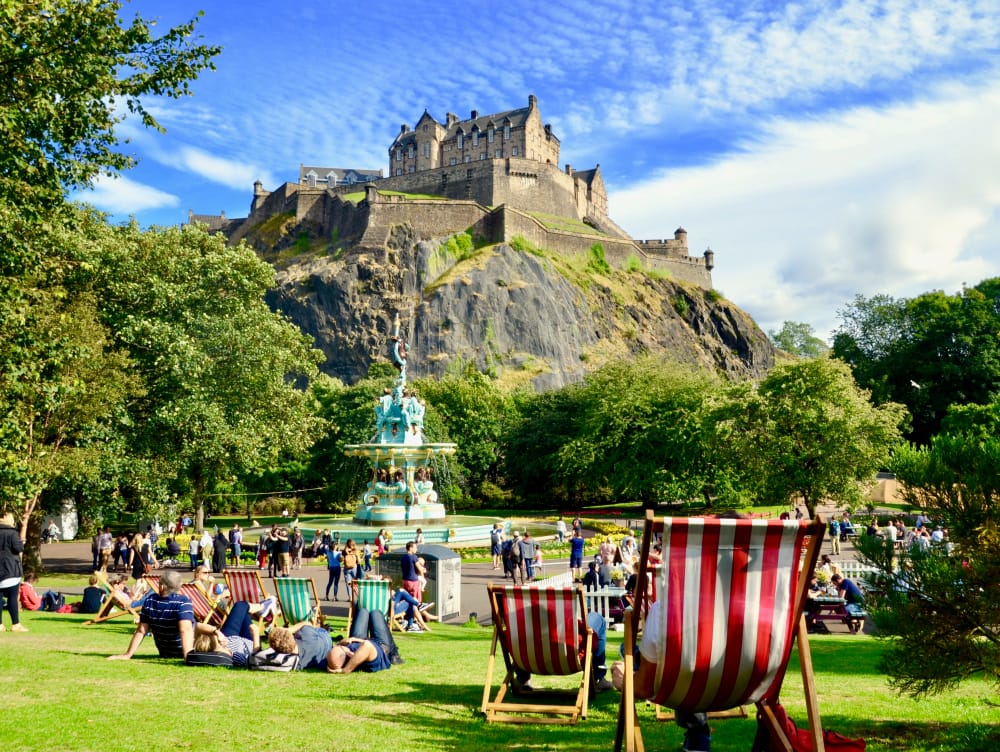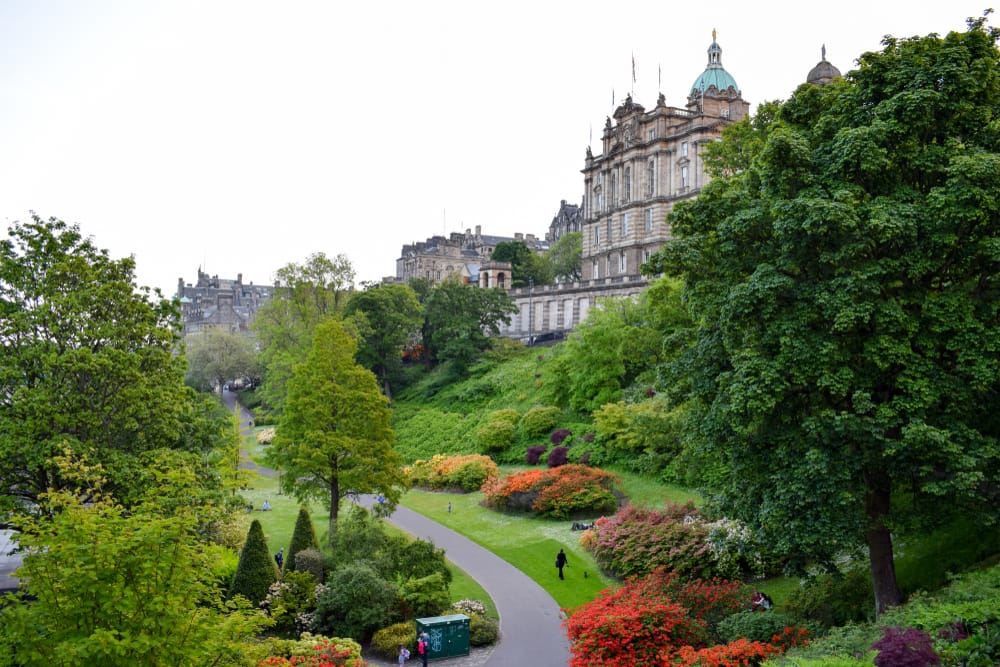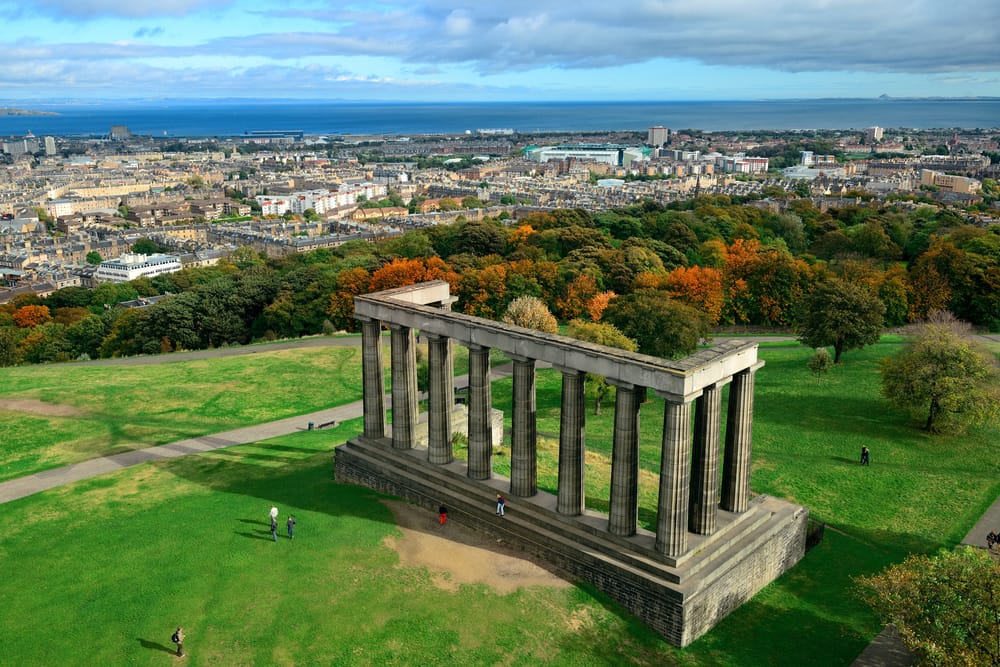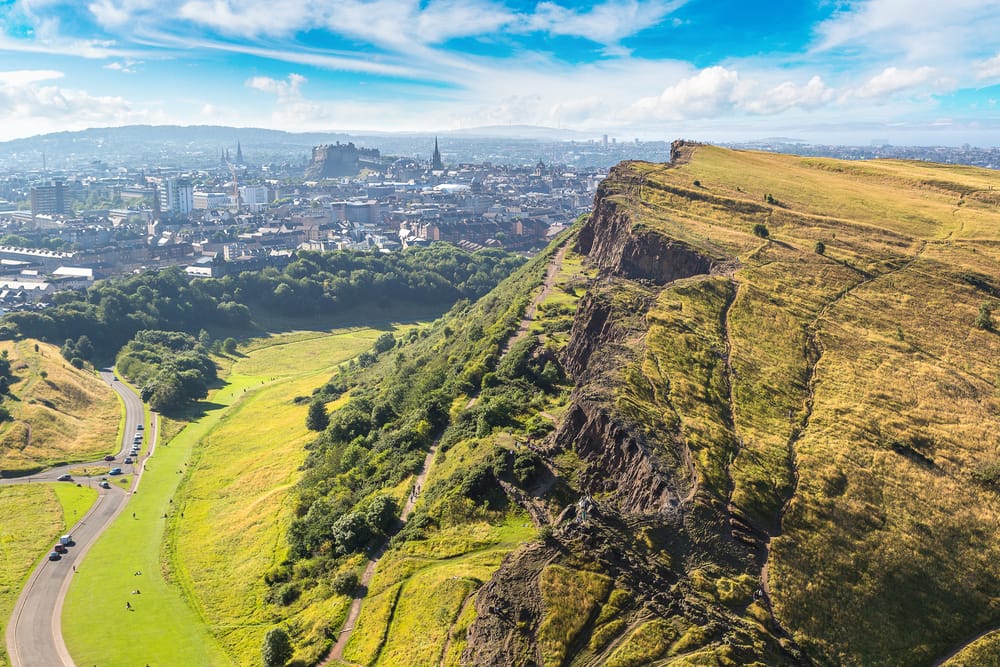Edinburgh boasts more green space than any other major city in the UK. The mapping company Esri UK has recently used satellite images and mapping software to calculate the percentage green space in the ten most populated cities in the UK. Edinburgh came a clear first with 49.2% green space followed by Glasgow with 32%, Bristol 29%, Birmingham 24.6%, Greater London 23%, Sheffield 22.1%, Leeds 21.7%, Manchester 20.4%, Bradford 18.4% and Liverpool 16.4%. Edinburgh is a very walkable city, so you don’t have to use sometimes costly transport to enjoy its soothing shades of green.
Princes Street Gardens
Princes Street is the main shopping street, yet gardens stretch the length of its south side. The gardens were constructed on the site of an area of marshy land once known as the North Loch, which was drained in the early 19th century. East Princes Street Gardens (3.4ha) lie close to the entrance to Waverley Station. In the weeks leading up to Christmas the gardens are home to the ‘Winter Wonderland’ attraction. Presiding over the gardens is the iconic Scott monument, a towering, neo-Gothic structure that encloses a statue of the great author Sir Walter Scott. These gardens are separated from West Princes Street Gardens by The Mound – the location of the National Gallery of Scotland and the Royal Scottish Academy. West Princes Street Gardens are larger (12ha) and perhaps more interesting. There are abundant, well maintained benches for peaceful relaxation, shielded from the bustle of the busy street by virtue of its lower levels. From here you can restfully contemplate the dramatic, steep cliff of the Castle Rock.
Calton Hill
Glance eastwards down Princes Street and your eye will immediately be caught by the group of very distinctive monuments topping the 100m high Calton Hill – another green space at the heart of Edinburgh. Visitors generally approach the hill from Waterloo place. Information about how to reach its crest can be misleading, implying that you must negotiate steep steps. You do not. Yes, there are a handful of steps at the start, but you do not need to follow the steep steps on the right hand side of the path. Just continue up the well-made, gentle path that will soon bring you to the top, from where you will be granted superb views of Edinburgh. You can now investigate the buildings you have seen from below: the Nelson Monument (30m high), the Dugald Stewart Monument and the City Observatory Complex, which now houses small exhibitions of contemporary art ( free entry but a donation is appreciated). But most striking of all is the National Monument, the never completed mini-Parthenon. The project began in the 1820s but stopped when funding ran out.
At the bottom of Calton Hill, on the north side, the Royal Terrace Gardens line London Rd. The gardens are partly wooded and are mostly open to the public, which is not the case with a number of the city’s very attractive gardens. The extensive, well laid out Queen Street Gardens, for instance, are only accessible to key holders.
Holyrood Park and Arthur’s Seat
Hill walking in a fairly wild landscape within the bounds of a city might seem a rather unlikely prospect, yet it is on offer here in Edinburgh.
Holyrood Park is a 260ha expanse of green space dominated by Arthur’s Seat, a 251m high mound of hardened volcanic lava. The flat areas around its base make ideal picnic spots and also act as a venue for open-air events.
There are a number of paths to the summit of Arthur’s Seat which although quite steep, some more than others, should not pose any problems for a normally fit hill walker. The summit provides amazing views of the city and surrounding area. On a warm sunny afternoon, though, it is not the place for those seeking solitude. A word of caution – Salisbury Crags can be dangerous; they are not a play area. On the south side of Arthur’s Seat lies the small Duddingston Loch, which acts as a bird sanctuary.
Slightly further, yet walkable
About half a mile from the western end of Princes Street is Dean Village, a hidden gem, untroubled by almost all tourists. A cobbled alley takes you down into a mini valley through which the narrow Water of Leith flows. In the bat of an eyelid you go from a city road to a secluded haven of water, greenery and old cottages. You can take a stroll alongside the stream and rejoin the city at one of the bridges that cross it.
A one mile walk from the centre of Edinburgh will bring you to the green, leafy suburbs of Inverleith, where you will find the world class Royal Botanic Garden. Entrance is free, though there is a charge for admittance to the magnificent Glass houses. The garden offers 28ha of landscaped tranquillity. Highlights include the Arboretum, the Chinese Hillside, the Rock Garden, the Woodland Garden and the Scottish Nature Plants Collection.
The Meadows is a large public green space in the south of Edinburgh, further on from the National Museum of Scotland and close to Edinburgh University. It is a pleasant, open, grassy park with tree lined paths, and is suitable for many types of physical activity and family picnics.
I have confined my coverage of Edinburgh’s green spaces to those that are within easy walking distance. If you venture into the surrounding area there are many more to be enjoyed.








